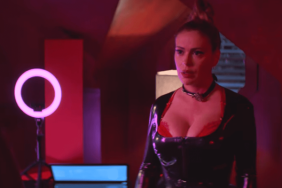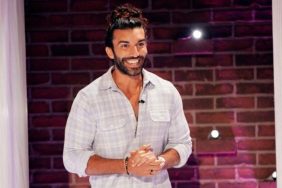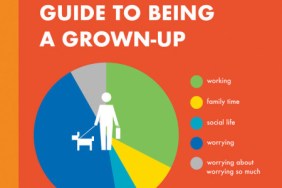Photo: Minna Proctor
Murder. Greed. Sex. Deception. Racial tension. Christopher Sorrentino’s new novel, The Fugitives, has all this and more. The story follows Brooklyn writer Alexander “Sandy” Mulligan III as he exiles himself to Michigan to complete his next book—only to find he spends more time drinking, taking walks, and reflecting on his failed marriage, an extramarital affair, and his dead father than he does writing.

The Fugitives is Sorrentino’s sixth book. His 2005 novel, the Patty Hearst-inspired Trance, was a finalist for the National Book Award. The 52-year-old author spoke to Crave from New York, where he lives with his family.
Crave: Trance was inspired by real events. Was The Fugitives also based on true crime?
Christopher Sorrentino: Not at all. The inspiration was that old public service advertisement from the ‘70s [“Keep America Beautiful”] in which the Native American cries when a passing motorist throws a bag of garbage at his feet. The guy who was in that commercial, Iron Eyes Cody, was in fact a Sicilian American and he spent his entire life playing Indians in the movies. He began to identify as one and would get—if I understand correctly—huffy if you suggested to him that he wasn’t. I was talking about that to someone and it struck me that it might be interesting to explore another circumstance where an Italian American might try to “pass” as a Native American. What would motivate that? The book grew out of that tiny little germ.
What specifically about the Ojibwe intrigued you?
They were more a character of opportunity. I knew that area of Michigan fairly well and that is the tribe that predominates up there. I selected them for that and, too, because of Hemingway’s association with that region of Michigan and his inclusion of Ojibwe in stories of his.
Where do Salteau’s folk tales about “Nanabozho, the trickster” come from?
Those tales came from a variety of sources. They came from modern folklorists online. They came from 19th-century people who wrote down slightly Europeanized versions of old stories. One book that I did use was Native American Fiction: A User’s Manual by David Treuer. It’s a really interesting book. I used that to orient myself as far as Native American folklore is concerned. It’s also the source for the “Smartberries” story that appears in the book.
I worked up my own interpretations of maybe a dozen stories and tried to see which of them would work best in the context of the book. I settled on the ones that are in there now because they seemed to best reflect the story that they immediately followed or immediately proceeded.
Cultural identity seems to be a recurring theme in the book. Is that something you’ve struggled with?
Not exactly. What I was thinking about, at least as far as the character of Kat is concerned, is my mother’s experience. My mother is Puerto Rican. She’s…I don’t know how to put this in terms that are inoffensive today…she’s a fully assimilated New York person who was raised in the south Bronx. Her first language is Spanish. Her crossing the invisible boundary between those two worlds fascinated me when I was a kid. On the one hand, she’d be this Greenwich Village citizen who lived this cosmopolitan, literary life and on the other hand, once a month we’d go up to the Bronx and visit my family up there and it was a really different world.
I wouldn’t say that my mother was quite as evasive as Kat is—in fact, I wouldn’t say she was evasive at all. It’s hardly like she turned her back on her heritage. It was more as if there was a divide in her life. It wasn’t a firsthand experience, but it was definitely one I spent a lot of time thinking about as I grew up.
Your father, Gilbert Sorrentino, was a writer. Did you become a writer as a way of following in his footsteps or did you come to it on your own?
I think it had a definite influence on me. It gave me a push in that direction. I didn’t have too many illusions about what it entailed. Watching someone sit around writing a novel for two, three, four years, tends to demystify the process. I came to writing a little late in today’s terms. I didn’t go through an MFA program. I only began to write seriously when I was in my mid-20s. It feels old nowadays. I teach kids who are 18, 19, and they already have their minds made up. By those standards, I was way behind the curve.
Your protagonist, Sandy Mulligan, can’t seem to finish writing his book. What is your relationship to procrastination? Do you think it is a natural part of the creative process?
It’s part of my creative process, that’s for sure! My relationship with procrastination is longstanding and near toxic. [Laughs] You could ask my mother about that. When I was a kid in school, everything happened on Sunday night at ten o’clock. I’m a little more disciplined now, but it’s definitely a part of how things go. For me, sitting down and working is often the hardest part, even if after I’ve done it, it feels like, “What was I worried about? What was I afraid of?”
I took that smaller aspect of my personality and pathologized it in Sandy. When I describe his tendency toward procrastination earlier in the book, that’s more in line with my own habits. What’s going on with him in Michigan is something else entirely and he’s not sure what to make of it.
Have you ever gone into exile to finish a book—and if so, did it work?
I never have. I don’t think it would work. It’s never been my sense that being in New York is especially distracting or deleterious to writing fiction. I like it here. It feels really natural.
I’ve gone on exactly one writer’s residency, down in Marfa, Texas, where I spent a month. It was a productive month, but it didn’t really suit me. Being in Marfa was odd because there was this lunar quiet to it. It’s this desert town in west Texas, and there’re about 3,000 people in the town. I would take these long walks into the center of town, where, if I were very lucky, I would see two or three fellow pedestrians, and that was my contact with the world.
Notwithstanding the fact that I like being in New York and like sitting at my desk and like having all my tchotchkes around me, I think I’ve always entertained the same fantasy every writer entertains: What if I had all the time I needed, all the money I needed, all the isolation I needed? What wonderful work would I produce? I put Sandy in that situation and what he produced was bupkis.
There is a lot of discussion among your characters in The Fugitives about the inevitable death of publishing. Is that something that concerns you?
I don’t dwell on it. The thing about publishing and writers is that there is a lot of conflation between the two. Publishing may be in a kind of ontological crisis: What do we do? What form are books going to take? Who is our audience going to be? As a writer, I’m always interested in knowing what my career is going to look like, but insofar as the work I do when I sit down at my desk, it doesn’t cross my mind that often.
You use various point-of-views in the book. How did you decide which characters were represented in first person versus third person?
Usually I always start a novel and tell myself it will be a lot easier than it turns out to be. My sense was that this was going to be a first-person account by this writer about his encounter with this impostor and the various complications that arose from that. After a while, I began to realize that as much as I liked Sandy, he was really overbearing. It seemed like once I began to introduce the other characters, like Kat, it was probably going to be a break for everybody if I got away from his point of view and continued the novel from another person’s point of view. I didn’t want to continue with the first person. I can’t identify exactly what that choice was derived from, but as soon as I did that, the book began to open up.
As soon as Kat was there, and we were hearing about things from her perspective, her impression of things began to diverge from his impression of things. That’s where the book began to take off, but there was a bit too much indeterminacy. I realized I had to resolve that, so I created that penultimate section that’s told from the omniscient point of view. That, I guess, is intended to be more authoritative. That was my way of saying, “Here’s the stage in which you can begin to dope out what parts of what Sandy says are misleading, what parts of what Kat observes may be self-serving or blinded to what’s actually going on, here’s where you can get a look at some of the other characters whose characterizations have come strictly from the two main protagonists.”
Is the ending of the book the first ending you decided on? Or were there alternate versions?
By “ending,” do you mean the revelation about Salteau?
Yes.
I had no ending at all, and that was kind of a “Hail Mary.” I was sort of like, “I don’t really know where to wrap this up.” I could kind of tell where I might be able to bring it if I resolved it more conventionally, so I decided to go for the more supernatural ending, because the more I thought about it—and I did think about it for a while—the more compelling it seemed, the more in keeping it seemed with the trickster stepping into the lives of people who think that they’re in control of their own situations and subverting it and undoing that. That began to have more and more appeal to me. I decided that’s what was going to happen maybe a year before I finished the book. This book was a five-year project, so it was late in coming.








